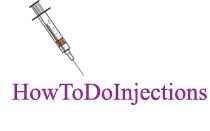I believe this is another one done...
MMS: Error
Background
The increase in heart rate that accompanies exercise is due in part to a reduction in vagal tone. Recovery of the heart rate immediately after exercise is a function of vagal reactivation. Because a generalized decrease in vagal activity is known to be a risk factor for death, we hypothesized that a delayed fall in the heart rate after exercise might be an important prognostic marker.
Full Text of Background...
Methods
For six years we followed 2428 consecutive adults (mean [±SD] age, 57±12 years; 63 percent men) without a history of heart failure or coronary revascularization and without pacemakers. The patients were undergoing symptom-limited exercise testing and single-photon-emission computed tomography with thallium scintigraphy for diagnostic purposes. The value for the recovery of heart rate was defined as the decrease in the heart rate from peak exercise to one minute after the cessation of exercise. An abnormal value for the recovery of heart rate was defined as a reduction of 12 beats per minute or less from the heart rate at peak exercise.
Full Text of Methods...
Results
There were 213 deaths from all causes. A total of 639 patients (26 percent) had abnormal values for heart-rate recovery. In univariate analyses, a low value for the recovery of heart rate was strongly predictive of death (relative risk, 4.0; 95 percent confidence interval, 3.0 to 5.2; P<0.001). After adjustments were made for age, sex, the use or nonuse of medications, the presence or absence of myocardial perfusion defects on thallium scintigraphy, standard cardiac risk factors, the resting heart rate, the change in heart rate during exercise, and workload achieved, a low value for heart-rate recovery remained predictive of death (adjusted relative risk, 2.0; 95 percent confidence interval, 1.5 to 2.7; P<0.001).
Full Text of Results...
Conclusions
A delayed decrease in the heart rate during the first minute after graded exercise, which may be a reflection of decreased vagal activity, is a powerful predictor of overall mortality, independent of workload, the presence or absence of myocardial perfusion defects, and changes in heart rate during exercise.
MMS: Error
Background
The increase in heart rate that accompanies exercise is due in part to a reduction in vagal tone. Recovery of the heart rate immediately after exercise is a function of vagal reactivation. Because a generalized decrease in vagal activity is known to be a risk factor for death, we hypothesized that a delayed fall in the heart rate after exercise might be an important prognostic marker.
Full Text of Background...
Methods
For six years we followed 2428 consecutive adults (mean [±SD] age, 57±12 years; 63 percent men) without a history of heart failure or coronary revascularization and without pacemakers. The patients were undergoing symptom-limited exercise testing and single-photon-emission computed tomography with thallium scintigraphy for diagnostic purposes. The value for the recovery of heart rate was defined as the decrease in the heart rate from peak exercise to one minute after the cessation of exercise. An abnormal value for the recovery of heart rate was defined as a reduction of 12 beats per minute or less from the heart rate at peak exercise.
Full Text of Methods...
Results
There were 213 deaths from all causes. A total of 639 patients (26 percent) had abnormal values for heart-rate recovery. In univariate analyses, a low value for the recovery of heart rate was strongly predictive of death (relative risk, 4.0; 95 percent confidence interval, 3.0 to 5.2; P<0.001). After adjustments were made for age, sex, the use or nonuse of medications, the presence or absence of myocardial perfusion defects on thallium scintigraphy, standard cardiac risk factors, the resting heart rate, the change in heart rate during exercise, and workload achieved, a low value for heart-rate recovery remained predictive of death (adjusted relative risk, 2.0; 95 percent confidence interval, 1.5 to 2.7; P<0.001).
Full Text of Results...
Conclusions
A delayed decrease in the heart rate during the first minute after graded exercise, which may be a reflection of decreased vagal activity, is a powerful predictor of overall mortality, independent of workload, the presence or absence of myocardial perfusion defects, and changes in heart rate during exercise.

































.gif)












































